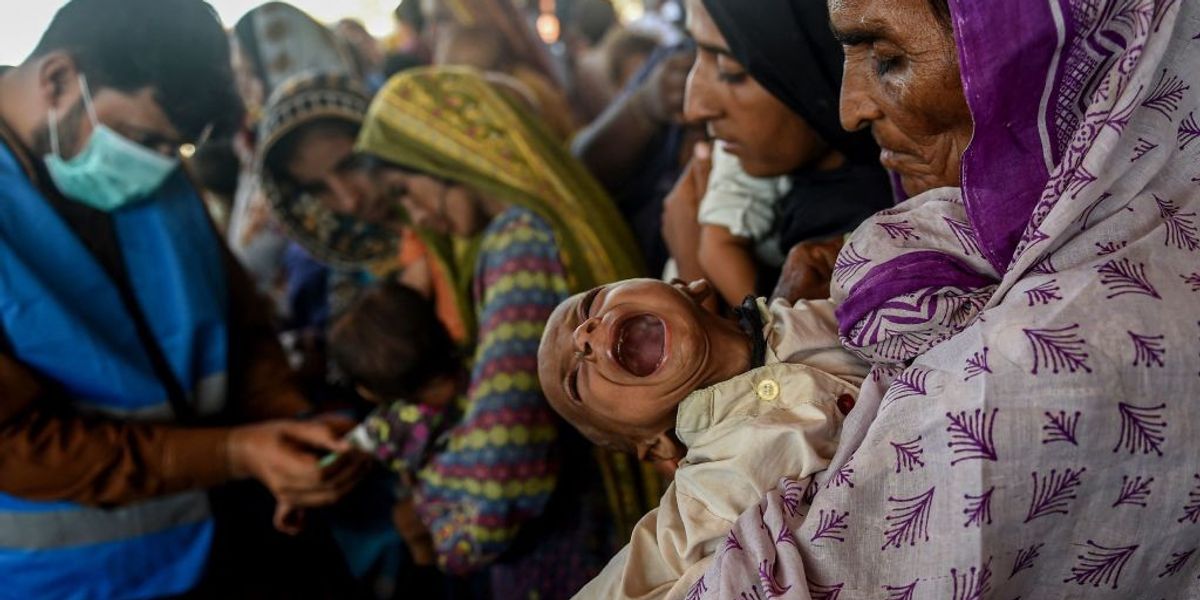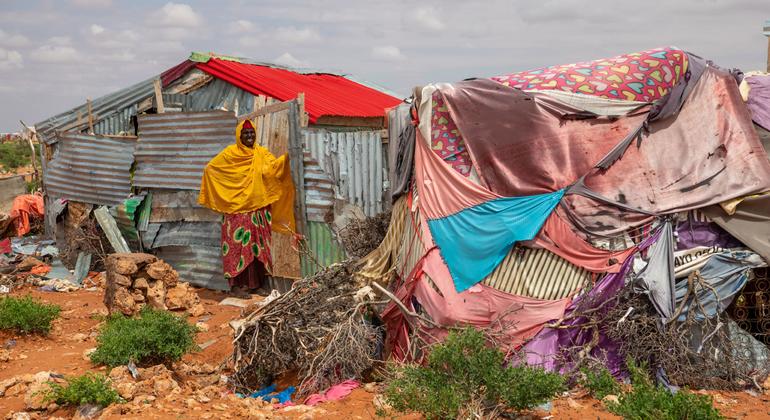
She will be called Aya. This is the name that nurses gave to the infant baby pulled from the rubble of a five-story building in Jinderis, northern Syria. A miracle. Beside her, the rescuers found her mother, dead. She had given birth within hours of the 7.8-magnitude earthquake that struck Turkey and Syria on the night of February 6, 2023. Like her, more than 50,000 people died in the earthquake. As tragic as it is hopeful, this story has moved the international media. It also reminds us that over 350,000 pregnant women who survived the earthquake now urgently need access to health care, according to the United Nations. And this is only one aspect of women’s vulnerability to natural disasters.
Floods, droughts, earthquakes, and other extreme events are not gender-neutral, especially in developing countries. Evidence shows that women and girls die in greater numbers and have different and uneven levels of resilience and capacity to recover. Of the 230,000 people killed in the 2004 Indian Ocean Tsunami, for example, 70% were women. Because of gender barriers, they often have fewer survival skills: boys are taught to swim or read first. This makes it difficult for them to access early warnings or identify safe shelters.
In addition, it is more difficult for women to escape from danger, since they are most often responsible for children, the elderly, and the sick. Heightened tensions and fear, as well as the loss of income provoked by disasters, drive increased domestic violence against women and girls. They are also the first victims of sexual violence and exploitation when entire populations are displaced—this was one of the first concerns in Pakistan when more than 8 million people had to leave their homes because of the terrible floods in June through August of 2022.
Progressive taxation—making the richest people and multinationals pay their fair share—is one of the most powerful tools for reducing inequality of all kinds.
Natural catastrophes negatively impact everyone economically, but women and girls are disproportionately affected. World Bank data show that female farmers suffer much more than male ones in rural areas. Assigned to domestic tasks, they are more dependent than men on access to natural resources and are, therefore, the first to suffer when these become scarce. In every region, food insecurity is higher among women than men. In 2020, it was estimated that nearly 60% of the people who go hungry are women and girls, and the gender gap has only increased since then. Their lack of access to bank accounts also means that women’s assets are less protected than men’s.
And, of course, recovery from any crisis builds on societal expectations related to gender roles. Consequently, women bear the brunt of the increased domestic burden after a disaster at the cost of missing out on other income-generating activities. We know that women spend, on average, 3.2 times more time than men on unpaid care work, and the COVID-19 pandemic—another human-induced natural catastrophe—made evident how unequally unpaid care and domestic work is shared, and how undervalued and underrecognized it is. This is a major constraint on women’s access to education, an obstacle to their entry into and advancement in the paid labor market, and to their political participation, with serious consequences in terms of social protection, income, and pensions.
Gender inequality exacerbates the impact of natural disasters, and the consequences of natural disasters exacerbate gender inequality. This is an unacceptable vicious cycle. With the world already facing a growing number of climate-related tragedies, governments must take immediate and long-term action to invest in universal access to health care, water and sanitation, education, social protection, and infrastructure for gender equality and the full enjoyment of women’s human rights.
As the world celebrates International Women’s Day, let’s keep in mind that it is impossible to build more resilient societies without fighting for gender equality.
Even in times of crisis, when state coffers are nearly empty, there are equitable solutions to raise revenues to fund the investments needed to strengthen women’s resilience: to make those who profit from the crises ravaging the planet, including from those natural disasters, pay, as recommended by the Independent Commission for the Reform of International Corporate Taxation (ICRICT), of which I am a member alongside, among others, Joseph Stiglitz, Jayati Ghosh, and Thomas Piketty. Instead of implementing austerity programs that devastate the most disadvantaged, states can increase their fiscal space by taxing companies and the super-rich more.
It starts with taxing the super profits made by multinationals, and several countries in Europe and Latin America have already begun to do so. This is particularly true for the pharmaceutical giants that have made a fortune selling vaccines against Covid-19, which they were able to develop due to public subsidies. This is also the case for multinationals in the energy or food sector: Oxfam estimates that their profits increased by more than two and a half times (256%) in 2022 compared with the 2018–2021 average. For the same reasons, it is urgent to tax the richest, who get away with paying hardly any taxes these days. One cannot accept that, as Oxfam reminds us, a man like Elon Musk, one of the wealthiest men in history, is taxed at 3.3%, while Aber Christine, a market trader in Uganda who sells rice, is taxed at 40%.
Progressive taxation—making the richest people and multinationals pay their fair share—is one of the most powerful tools for reducing inequality of all kinds. As the world celebrates International Women’s Day, let’s keep in mind that it is impossible to build more resilient societies without fighting for gender equality. Continuing to ignore it is a political choice, and an even more perilous threat to development than natural disasters themselves.




